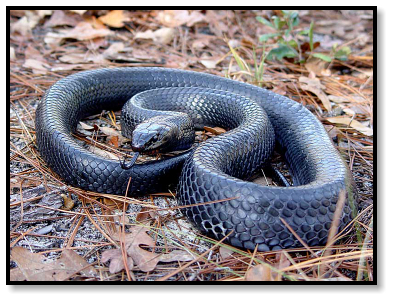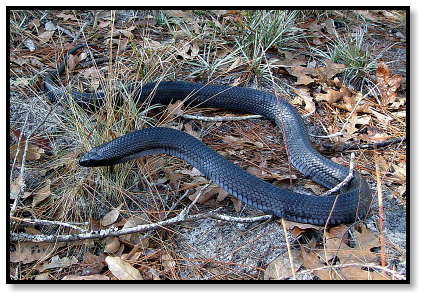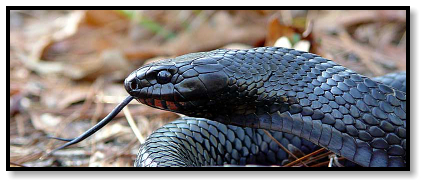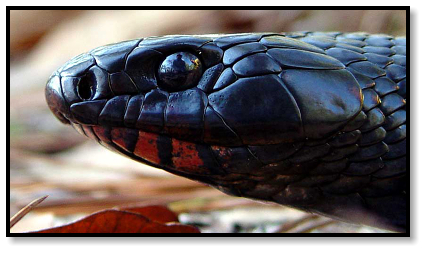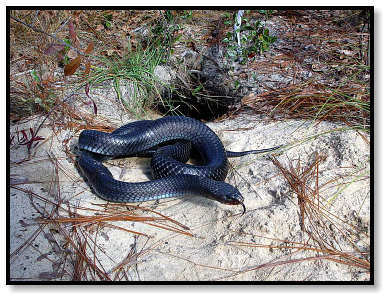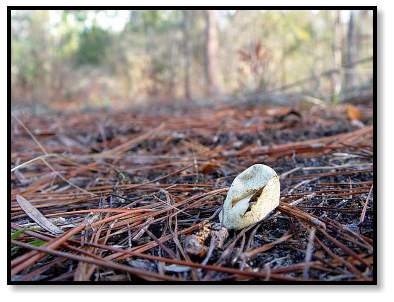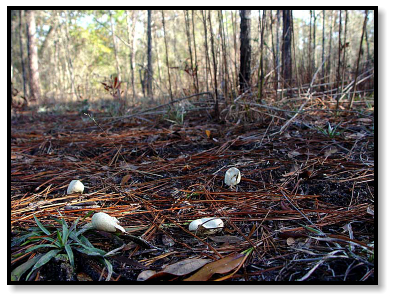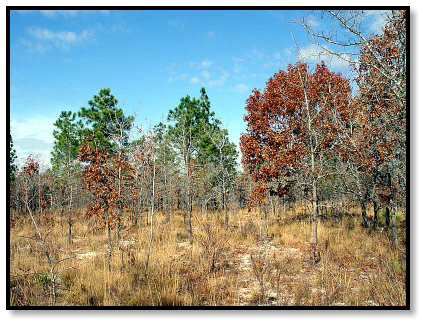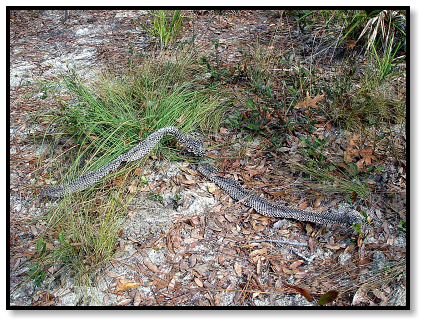

FLORIDA & GEORGIA
December 2004

1 of 1


FLORIDA & GEORGIA
December 2004


1 of 1
Scratching at the leaves and sand, Bill explains that Neoseps hide just below the surface, where they feed on bugs
living in the leaf litter. As he gently rakes away, Ron and I watch, searching for any sign of lizard. Of course, in my
mind, I’m expecting to see something that looks like an ordinary, brownish skink.
Suddenly a flash of silver wriggles in the wake of uncovered leaves. My mind is confused. Was that bait? Sure
looks like a fish, scales shimmering as it breaks the surface. It’s really remarkable. I mean, think about it: How often
do you see a silver reptile?
But shiny scales aren’t the only fish-like things about this lizard. The tiny front feet with a single digit have been
reduced to pectoral “fins”, and the rear legs fold into a lateral groove, allowing the skink to “swim” through the sand.
Although I grew up in south Florida, tromping through the Everglades and Big Cypress Swamp, I spent little
time herping other areas of my home state during those formative snake-hunting years. Thanks to an invitation from
Bill Love of Blue Chameleon Ventures (author, educator, professional photographer, Madagascar herp tour leader, and
all around good guy) I had an opportunity to explore new territory during my annual family vacation to Florida.
North of Lake Okeechobee are the land-locked remnants of prehistoric islands, now a series of sand hills
covered by scrub forest, known as the Lake Wales Ridge. Because of its isolated past, some of the native plants and
animals evolved into unique species found nowhere else on earth. One of those endemics is the Sand Skink, Neoseps
reynoldsi, which I had never even heard of, much less seen, but Bill felt sure he could show me at least one. Happily,
he was right.
My brother Ron and I meet Bill at his home, a perfect herper’s hideout deep within a hardwood hammock.
Before leaving we are treated to a tour of the breeding facility where his wife, Kathy the Cornsnake Queen, raises her
outrageously beautiful snakes for CornUtopia. Then it’s off to hunt the mighty Sand Skink.
As we drive north towards the Ridge, flat open fields and crowded pinelands gradually give way to gentle hills
sparsely covered by scrub oak and palmetto. Bill guides us to a likely spot and we began our search.
Ron spots a lizard, but it’s not a Neoseps. Instead it’s a different endemic of the Lake Wales Ridge, the Blue-tailed
Mole Skink (which sometimes, just to be contrary, sports an all-orange tail).
We make our way through the sandhills, occasionally passing Gopher Tortoise burrows. We stop at one, pull
out a mirror, and shine the hole to see if anyone’s at home. Sure enough, there’s the resident reptile staring back, no
doubt wondering what the sun is suddenly doing down in its tunnel.
Tortoise burrows in the Lake Wales Ridge are also home to an unusual subterranean amphibian, the Florida
Gopher Frog. Besides living underground in sandy burrows, another cool thing about these frogs is their call, which
resembles really loud snoring.
Ron and I also get out on our own for some time in the Everglades and Big Cypress Swamp, where we see the
usual array of South Florida suspects.
En route back north I stop in Georgia to explore the sand hills area I visited in spring (see Southeast 2004).
Walking through the pine and scrub oak forest I find my first evidence of herps, a few discarded shells left
behind by newborn Black Racers. Look closely and you can see the slits made by the temporary egg tooth that
hatchlings use to cut their way out.
Then I come across another indication of nearby herps, a large shed that can mean only one thing: Indigo!
I proceed slowly, scanning the surrounding area for something big and black, but it’s my hearing that detects the
snake. While I’m looking one way, off to the side I hear a faint shhh through the leaf litter. Glance up, turn my head,
and there it is, all seven feet stretched out and facing me sideways, with its neck rising and flaring to make sure I am
properly impressed. Indeed, I am.
Eastern Indigo Snake
Drymarchon corais couperi

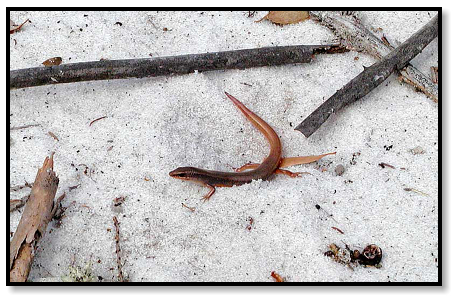
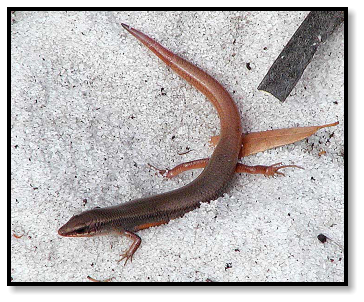
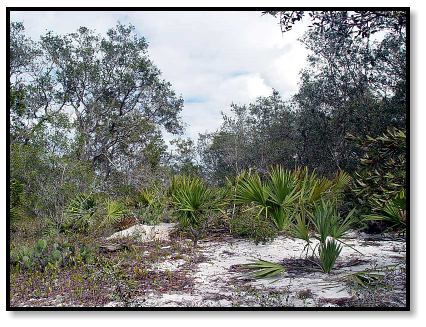

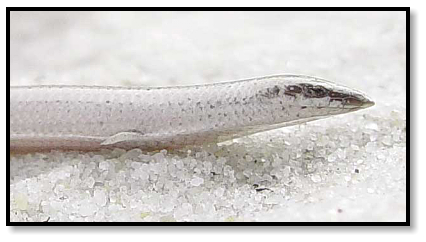
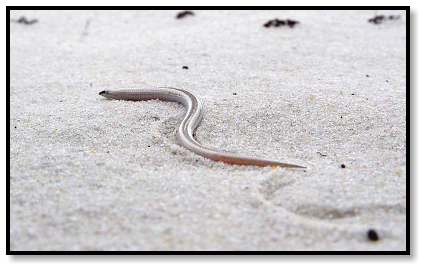
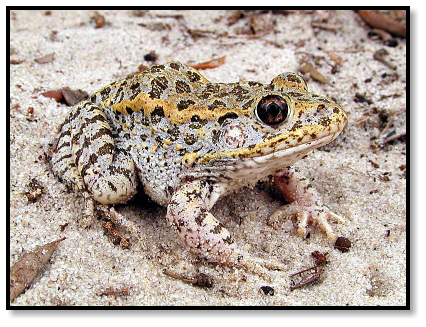

Blue-tailed Mole Skink
Eumeces egregius lividus
Florida Sand Skink
Neoseps reynoldsi
Bill Love flashing
Florida Gopher Frog
Rana capito aesopus
To hear the snore, uh, call . . . click the arrow below
Gopher Tortoise
Gopherus polyphemus
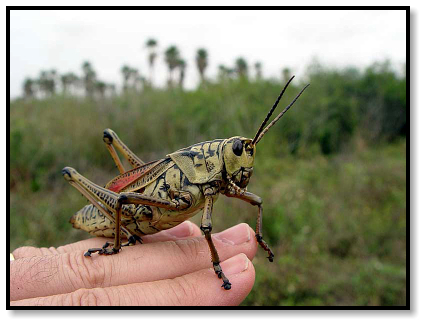

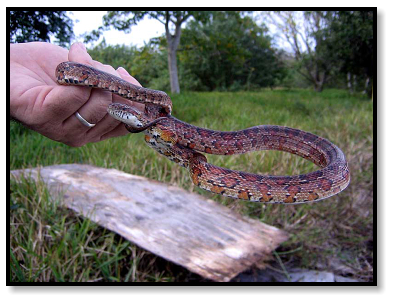
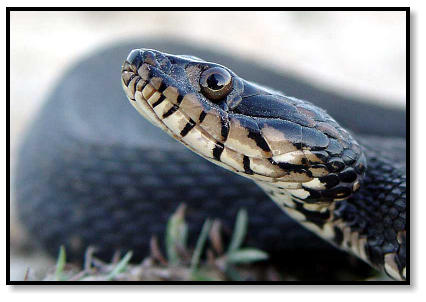
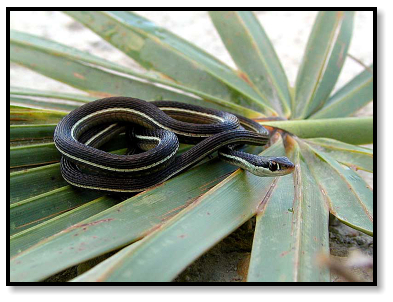
American Alligator
Alligator mississippiensis

Peninsula Ribbon Snake
Thamnophis sauritis sackenii
Corn Snake
Elaphe guttata guttata
Florida Banded Watersnake
Nerodia fasciata pictiventris
